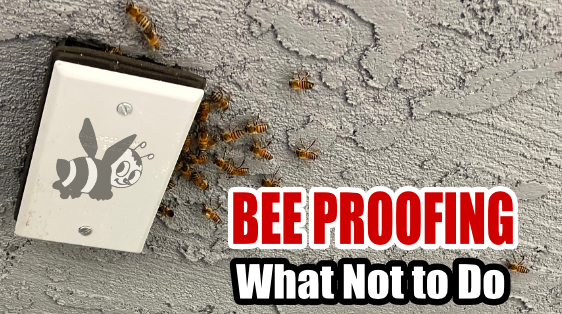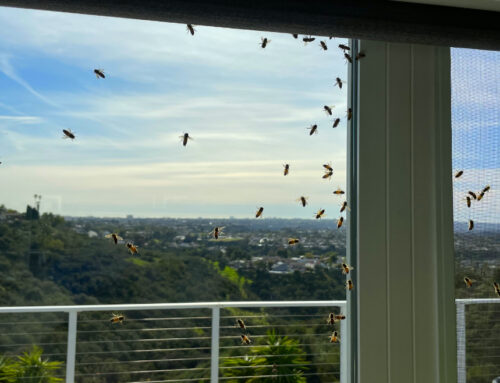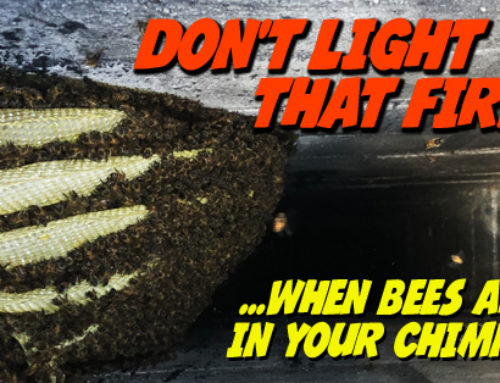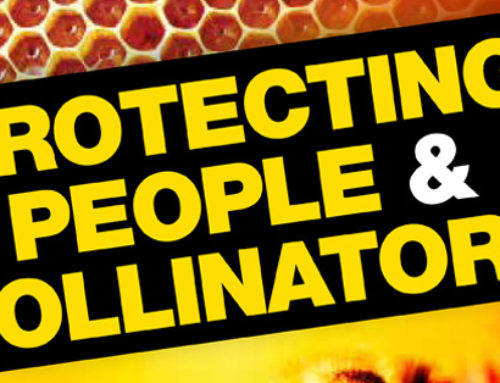Discovering bees inside the structure of your home can be a stressful experience. Although most of us are fond of bees when they are out in nature, no one likes to find them inside the wall voids or in the attic of their home. Luckily there are measures you can take to help reduce the chances of a bee infestation.
So how do you prevent bees from entering the structure of your home? Proofing your home (Bee Proofing) can really make a difference, provided you take steps BEFORE the bees enter the structure. I have emphasized the word BEFORE to highlight the fact that bee proofing is a preventative measure. If bees have already gotten inside, bee proofing will NOT be an effective measure to solve the bee problem. Bee proofing works by closing off any gaps, cracks, and/or holes that are often infested by bees. By adding screens and/or silicone to these open areas, bees are unable to gain access to the inside of the wall voids and/or interior attic areas
So what are the common areas that need to be bee proofed?
- Vents – Even if the vents are screened, Bees can squeeze through any screening that is larger than 3/16ths of an inch. Most homes are equipped with 1/4 inch screens, which are large enough for bees to get through.
- Gaps in exterior walls – This includes any Gap, Crack, Hole, or Void on a wall, eave, or roof. Solution: Fill small holes or small openings (around utility cables or pipe work) with silicone. 1/8th inch galvanized screen should be used on larger gaps, holes, cracks and voids. .
- Roofs – Any areas of openings in need of repair may be an opportunity for bees to invade. The best solution is to repair any roof damage by hiring a professional roofing company. Once the repair has been made, have the repairmen seal any remaining gaps or cracks.
- Drains and sewer pipes – Bees have been known to fly inside sewer and drain pipes. They also have been known to infest roof gutters. In some cases, you can use galvanized steel screens to cover drains and gutters, as long as in doesn’t impede the flow of water and debris.
As mentioned before, the best bee proofing materials are 1/8th inch galvanized metal screens, for large openings, and silicone for small cracks and/or gaps. We have found these two types of materials to be the most effective at keeping bees out in most cases.
Then there are products that are much less effective for bee proofing. These products can break down over time. In addition bees can sometimes eat through the material. If the products you use don’t hold up, bees will eventually gain access again.
So what products should NOT be used? The products that are least effective are often ones that sound good in theory, but in reality fail to withstand bees from eventually breaking the barrier. The most common products that fail over time are the following:
Epoxy Foam. I can’t tell you how often we run into jobs where people have tried to use epoxy foam as a bee proofing measure. It is such a common mistake that we have already devoted an entire blog on why epoxy foam is a bad choice for bee proofing your home.
Spackle: Spackle is primarily for use on the interior. Rarely is it effective on the exterior, where it can crack from exposure to the sun and other elements.
Brillo Pads: Brillo pads are not a good choice. Brillo Pads and/or Steel Wool can rust when exposed to the elements. They can leave rust stains. They also tend to break down over time.
Rags: Rags alone (without silicone) can easily become dislodged by rodents and certain weather conditions. Rarely are they an effective long term solution.
All of the four products listed above sound like reasonable bee proofing solutions, yet they nearly always erode or fail to protect over time. In addition, these products can be difficult to clean up and a waste of money. Often they are ugly and unsightly. If you want to do it right, the best course of action is to use the right materials from the start. Whatever material you choose, be sure to bee proof the area before you have a bee problem, not after. The worst mistake of all would be to trap live bees inside by preventing them from getting out.







